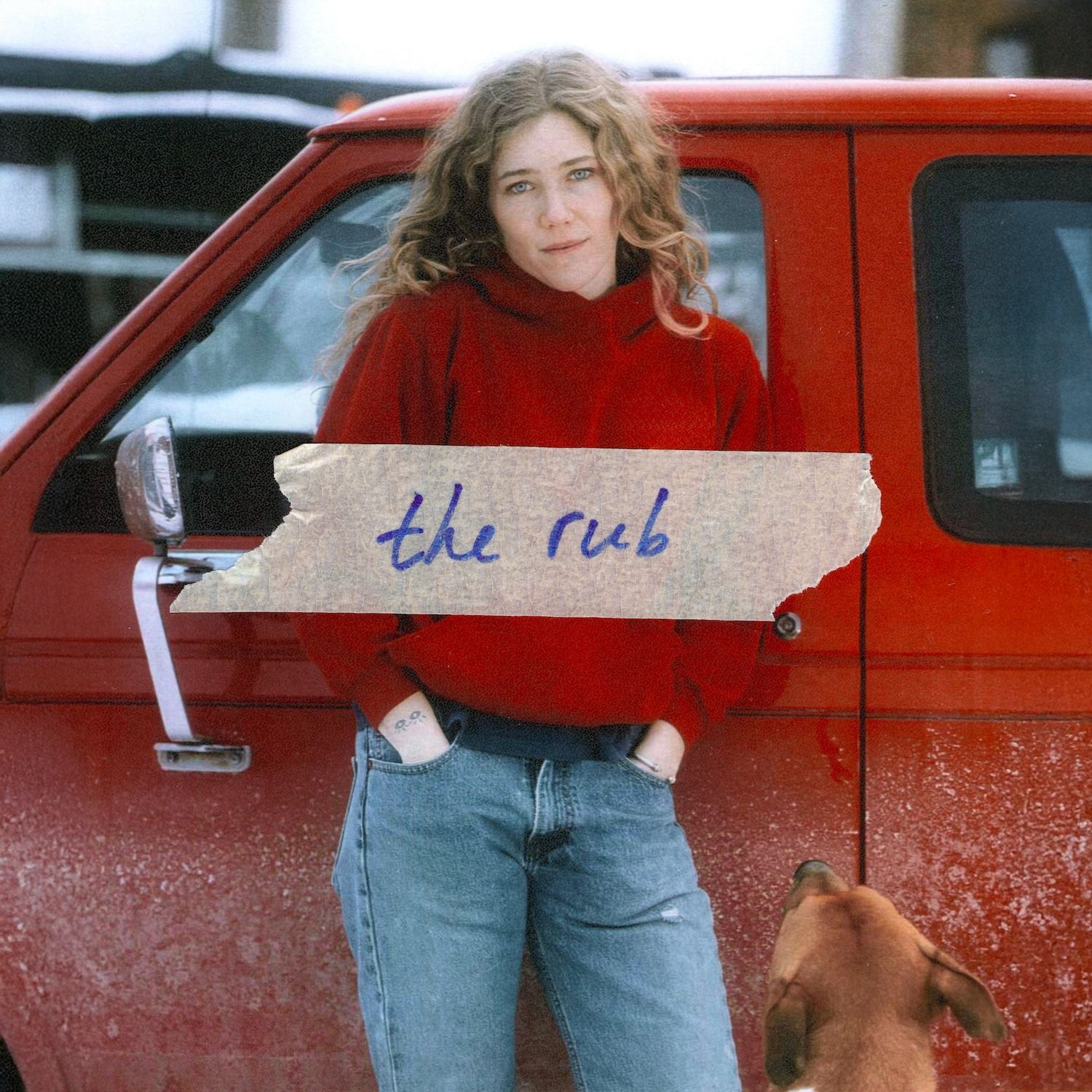n engagement ring represents far more than a simple purchase—it’s a symbol of commitment, a family heirloom in the making, and for many, a significant financial investment. When couples invest thousands or even tens of thousands in a ring, questions about long-term value naturally arise. Will this purchase retain its worth? Could it appreciate over time? What factors influence whether a ring maintains or loses value?
These considerations become particularly relevant when considering prestigious jewelry brands that command premium prices. The emotional significance of an engagement ring is undeniable, yet understanding the financial aspects helps couples make informed decisions that honor both sentiment and practicality. Whether you’re planning a proposal, considering insurance coverage, or simply curious about the economics of fine jewelry, understanding value retention in engagement rings provides valuable perspective on this meaningful investment.
The Brand Premium in Fine Jewelry
Luxury brands command higher prices than independent jewelers for comparable pieces. This premium reflects more than just the physical components—it encompasses heritage, craftsmanship, design, and the intangible value of prestige.
What You’re Actually Paying For
When purchasing from renowned jewelry houses, the price includes several elements beyond the diamond and metal. You’re investing in established design aesthetics, often iconic and instantly recognizable. The craftsmanship standards at prestigious houses typically exceed industry norms, with rigorous quality control at every production stage.
Brand heritage matters significantly. Companies with century-spanning histories offer continuity and reliability that newer entities cannot match. This legacy translates into customer confidence—knowing that a brand has thrived for generations suggests it will continue honoring warranties and providing service decades into the future.
The shopping experience itself carries value. Prestigious jewelry houses provide exceptional service, knowledgeable staff, luxurious environments, and often, complementary services like cleaning, resizing, and maintenance. These amenities, while intangible, enhance ownership experience.
The Prestige Factor
Brand recognition carries social currency that some buyers value highly. Certain jewelry houses have become cultural touchstones, associated with romance, luxury, and timeless elegance through decades of careful brand cultivation. This recognition can make pieces from these houses particularly meaningful to recipients who appreciate the symbolism.
However, prestige comes at a cost. The question becomes whether this premium enhances or detracts from the ring’s value proposition when considered as a long-term investment rather than purely an emotional purchase.
Factors That Influence Ring Value Retention
Multiple elements determine whether an engagement ring maintains, increases, or decreases in value over time.
Diamond Quality and Market Dynamics
The center stone typically represents the largest portion of an engagement ring’s value. Diamond pricing follows established guidelines based on the “Four Cs”—cut, color, clarity, and carat weight. Well-cut diamonds in higher color and clarity grades from reputable sources generally hold value better than lower-quality stones.
However, diamonds aren’t commodities with uniform pricing. Market dynamics affect values significantly. Consumer preferences shift—round brilliants remain consistently popular, while fancy shapes experience trends that affect desirability and pricing. Lab-grown diamonds have disrupted traditional pricing structures, potentially affecting natural diamond values long-term.
Certification matters tremendously. Diamonds certified by respected gemological laboratories like GIA (Gemological Institute of America) or AGS (American Gem Society) command higher prices than uncertified or less rigorously certified stones. This documentation provides assurance about stone characteristics that significantly impacts resale value.
Setting and Craftsmanship
The ring’s setting—the metal work and design holding the diamond—affects value retention differently than the stone itself. Precious metals like platinum and gold have intrinsic value based on weight and market prices, but the craftsmanship adds value that may or may not be fully recovered upon resale.
Exceptionally crafted settings from skilled artisans retain value better than mass-produced alternatives. Unique designs or those from renowned designers can actually appreciate if the designer’s reputation grows. Conversely, trendy designs may lose appeal as fashions change, reducing resale value regardless of craftsmanship quality.
Simple, classic designs tend to maintain broader appeal over time. While elaborate settings showcase remarkable skill, they may limit the potential buyer pool to those who specifically appreciate that particular style.
Brand Recognition in Secondary Markets
Brand names significantly impact how pieces perform in resale situations. Jewelry from prestigious houses typically achieves higher resale prices than comparable unbranded pieces, though rarely approaching original retail prices.
The secondary market for luxury jewelry has grown substantially with online platforms connecting sellers and buyers more efficiently. This increased liquidity benefits well-known brands, as buyers feel more confident purchasing pre-owned pieces from established names with verifiable quality standards.
However, brand premiums rarely transfer fully to secondary market sales. A ring that cost significantly more than comparable pieces due to brand name will typically sell at a percentage of its original price that may actually be lower in absolute terms than a less expensive ring from an independent jeweler.
Resale Realities: What to Expect
Understanding realistic expectations about jewelry resale helps couples make informed decisions and avoid disappointment if circumstances require selling.
The Markup Reality
Retail jewelry typically carries substantial markups covering overhead, marketing, salaries, and profit margins. This markup means that resale prices, even immediately after purchase, generally fall well below original retail prices—often 25-50% or less.
This isn’t unique to jewelry; most retail goods lose significant value immediately upon purchase. However, the magnitude can surprise buyers who view engagement rings as investments comparable to real estate or fine art.
When reselling to dealers or jewelers, expect offers around wholesale prices—what the dealer would pay to acquire similar pieces for their inventory. This creates a substantial gap between what you paid retail and what dealers offer, regardless of the ring’s condition or provenance.
Private Sale vs. Trade-In Options
Selling privately through platforms, consignment, or auction houses typically yields higher returns than selling to dealers, though this approach requires more time, effort, and potentially fees. Private buyers pay more than dealers because they’re acquiring for personal use rather than resale, closing part of the retail-to-wholesale gap.
Trade-in programs offered by some jewelers provide credit toward new purchases, often at values higher than outright cash offers. These arrangements benefit buyers looking to upgrade but don’t provide liquidity if you need cash rather than different jewelry.
Auction houses specializing in jewelry can achieve strong prices for exceptional pieces, particularly those from prestigious makers with strong provenance. However, auction fees (often 20-25% of the sale price) reduce net proceeds, and there’s no guarantee of sale if reserve prices aren’t met.
Market Conditions and Timing
Like any commodity, jewelry values fluctuate with broader economic conditions. Precious metal prices vary based on economic factors, directly affecting the metal portion of a ring’s value. Diamond markets experience supply and demand shifts affecting pricing, though generally with less volatility than metals.
Economic downturns typically depress resale values as luxury goods become less accessible to fewer buyers, while economic booms can strengthen secondary markets as more buyers have discretionary income for luxury purchases.
The Long-Term Value Perspective
Rather than viewing engagement rings purely through a short-term resale lens, consider value across longer timeframes and broader definitions of worth.
Heirloom Potential
Engagement rings often transition into family heirlooms passed through generations. From this perspective, “value” extends beyond monetary worth to encompass emotional significance, family history, and sentimental attachment that appreciates regardless of market conditions.
Well-crafted rings from reputable sources are more likely to withstand decades or even centuries of wear, maintaining both beauty and functionality that enables this heirloom journey. Quality craftsmanship literally pays dividends across generations when pieces remain wearable and cherished rather than deteriorating or falling apart.
Pieces from renowned jewelry houses often carry particular heirloom appeal. Their recognizable design heritage and established reputations add context and story that enhance sentimental value for future generations who inherit these pieces.
Appreciation Scenarios
While most engagement rings depreciate from retail prices initially, certain pieces can appreciate over time under specific circumstances. Vintage and antique jewelry often commands prices reflecting both materials and historical/artistic significance. A contemporary ring might similarly appreciate decades hence if it exemplifies its era’s design or comes from a notable designer whose work becomes increasingly collectible.
However, banking on appreciation is speculative. Most engagement rings should be viewed as purchases for use and enjoyment rather than investment vehicles expected to generate returns. Any appreciation that occurs becomes a pleasant bonus rather than an expected outcome.
Insurance and Protection
Regardless of resale value, engagement rings warrant appropriate insurance protection. Specialized jewelry insurance or riders on homeowner’s/renter’s policies protect against loss, theft, or damage. Insurance should be based on replacement cost—what you’d pay to acquire a comparable ring today—rather than resale or market value.
Regular appraisals (every 3-5 years) ensure insurance coverage remains adequate as values change over time. This protection provides peace of mind that the ring’s significance to your relationship won’t be lost even if the physical ring is.
Comparing Brand-Name vs. Independent Jewelers
The choice between prestigious brand names and independent jewelers significantly impacts both initial cost and long-term value considerations.
Quality and Craftsmanship Comparisons
Many independent jewelers offer craftsmanship rivaling or exceeding that of famous houses, often at substantially lower prices. Skilled independent designers and craftspeople produce exceptional work without the overhead and marketing costs that inflate brand-name prices.
However, brand-name houses maintain rigorous quality standards across all products, while independent jewelers’ quality varies more widely. Reputation and portfolio review become essential when considering independent sources, whereas brand names offer more predictable quality assurance.
Certification and Documentation
Both branded and independent jewelers should provide proper diamond certification from reputable laboratories. This documentation proves more important for long-term value than the seller’s name, as it objectively establishes the stone’s characteristics.
Brand-name pieces often include additional documentation—certificates of authenticity, original packaging, and purchase records—that enhance resale value by proving provenance. Independent jewelers may or may not provide comparable documentation, so buyers should request and retain all relevant paperwork.
Service and Warranty Considerations
Established jewelry houses typically offer lifetime or extensive warranties covering manufacturing defects, complimentary cleaning and maintenance, and repair services. These services add value throughout ownership even if they don’t directly increase resale prices.
Independent jewelers’ services vary widely. Some offer excellent ongoing support, while others provide minimal post-sale service. Understanding what’s included with purchase helps compare total value propositions beyond the initial transaction.
Smart Purchasing Strategies
Whether choosing branded or independent options, certain strategies optimize both initial value and long-term satisfaction.
Focus on Diamond Quality
Since the diamond typically represents the largest value component, prioritize stone quality over setting elaboration or brand name. A superior diamond in a simpler setting from an independent jeweler often represents better value than a mediocre stone in an ornate branded setting at the same total price.
Certification from GIA or AGS provides assurance about diamond quality that transcends seller identity. Never purchase significant diamonds without proper certification, regardless of seller reputation.
Consider Classic Designs
Timeless designs retain appeal across decades, maximizing both wearability and potential resale value. Trendy designs may look dated quickly, limiting long-term satisfaction and resale prospects.
Classic solitaires, three-stone rings, and simple pavé designs have remained popular for generations and likely will continue appealing to future buyers if resale becomes necessary.
Negotiate and Shop Around
Unlike many retail categories, jewelry prices are often negotiable, particularly at independent jewelers. Don’t hesitate to discuss pricing, especially for significant purchases. Many jewelers have flexibility, particularly if you’re purchasing without extensive customization or during slower business periods.
Comparison shopping between multiple jewelers—both branded and independent—provides valuable perspective on what different price points deliver in terms of quality, design, and service.
Understand Total Cost of Ownership
Look beyond purchase price to consider insurance costs, maintenance expenses, and any fees associated with services the jeweler includes or charges separately. A ring that costs less initially but requires expensive maintenance or lacks service support may prove more expensive long-term than a pricier option with comprehensive included services.
When Brand Name Matters Most
Despite the value considerations that might favor independent jewelers, circumstances exist where branded jewelry makes particular sense.
Symbolic and Emotional Value
If your partner has expressed specific admiration for a particular jewelry house, or if a certain brand carries special meaning in your relationship or family, the emotional value justifies the premium. Engagement rings are ultimately symbols of love and commitment—their emotional significance outweighs pure financial calculations.
Gift Presentation
The experience of receiving jewelry in signature packaging from a renowned house creates memorable moments that enhance the proposal experience. For some couples, this presentation value justifies additional cost.
Heirloom Intentions
If you’re specifically purchasing with heirloom intentions, branded pieces’ established provenance and recognizable design heritage can enhance their appeal to future generations who’ll inherit them. The story of “your great-grandmother’s engagement ring from [famous jeweler]” carries particular resonance that adds to emotional value.
Understanding Specific Brand Performance
While avoiding direct comparisons, understanding how luxury jewelry brands generally perform in secondary markets helps inform purchasing decisions. For those specifically interested in questions about the value of a Tiffany engagement ring or similar prestigious brands, researching resale patterns for specific makers provides useful perspective.
Different luxury brands command different premiums in secondary markets based on factors including design recognition, historical significance, and market demand for their specific aesthetic. Some heritage brands maintain stronger resale values than others, while newer luxury brands may not yet have established secondary market presence that supports strong resale prices.
Frequently Asked Questions
Do engagement rings generally appreciate or depreciate in value?
Most engagement rings depreciate from their original retail price due to the significant markup jewelry carries and the immediate transition from “new” to “used.” However, high-quality diamonds may hold value better than the setting, and precious metals fluctuate with commodity markets. Over very long periods (decades), well-made pieces can appreciate as they become vintage or antique, particularly if from notable designers or brands. However, viewing engagement rings primarily as financial investments typically leads to disappointment—they’re better understood as meaningful purchases for use and enjoyment that may retain reasonable value rather than appreciating assets.
What percentage of the original price can I expect when reselling?
Resale values typically range from 25-50% of original retail prices for immediate resale, with branded pieces sometimes achieving slightly higher percentages due to name recognition. Selling to dealers or jewelers generally yields lower offers (around wholesale value), while private sales through platforms or auction houses can achieve higher prices minus fees. Exceptional pieces with strong provenance, rare characteristics, or from highly collectible designers may perform better. The substantial gap between retail and resale reflects jewelry’s significant markups covering overhead, expertise, and profit margins that don’t transfer to pre-owned pieces.
Should I consider resale value when choosing an engagement ring?
While understanding resale realities provides helpful context, it shouldn’t dominate decision-making for such a meaningful purchase. Prioritize factors including the ring’s beauty, quality, how well it suits the recipient’s style, and its significance to your relationship. Choose quality materials—well-cut certified diamonds and precious metals—that retain reasonable value, but focus primarily on selecting a ring you and your partner will cherish rather than one optimized purely for potential resale. If resale becomes necessary due to unforeseen circumstances, quality pieces from reputable sources (whether branded or independent) will perform reasonably, though likely below original purchase prices.
Are branded engagement rings worth the premium price?
This depends entirely on what you value. From a purely financial perspective, branded rings typically cost significantly more than comparable quality pieces from independent jewelers, and this premium doesn’t fully transfer to resale value. However, branded pieces offer intangible benefits including design heritage, assured quality standards, prestigious presentation, comprehensive services, and emotional/symbolic value that some couples highly prize. If these factors matter significantly to you and your partner, the premium can absolutely be worthwhile. If you prioritize maximizing diamond quality and craftsmanship per pound spent, independent jewelers often provide better value propositions.
How can I protect my engagement ring’s value over time?
Maintain comprehensive jewelry insurance with coverage based on current replacement value, updating it every 3-5 years as values change. Keep all original documentation including diamond certificates, receipts, and authenticity paperwork. Have the ring professionally cleaned and inspected regularly (many jewelers offer this complimentarily) to catch and address any issues like loose prongs before they cause diamond loss. Wear the ring responsibly, removing it during activities that could cause damage. Store it properly when not wearing it—in a lined jewelry box away from other pieces that could scratch it. These practices maintain the ring’s condition and documentation that support its value if resale ever becomes necessary.
Conclusion
Engagement rings occupy a unique space where emotional significance and financial investment intersect. While understanding value retention, resale realities, and investment potential provides important context for such a substantial purchase, these financial considerations should inform rather than dominate decision-making about something so deeply personal and symbolic.
The most important truth about engagement ring value is that it extends far beyond monetary worth. The ring symbolizes your commitment, marks a pivotal life moment, potentially becomes a family heirloom carrying generations of memories, and serves as a daily reminder of your relationship. These intangible values dwarf financial considerations for most couples, even while prudent financial awareness remains appropriate for such a significant expenditure.
Choose an engagement ring that resonates emotionally, suits your partner’s style, reflects your values as a couple, and fits comfortably within your financial means. Prioritize quality materials and craftsmanship from reputable sources—whether prestigious brands or skilled independent jewelers—that will provide lasting beauty and durability. Understanding resale realities helps set appropriate expectations, but shouldn’t overshadow the ring’s primary purpose: celebrating your love and commitment.
Ultimately, an engagement ring’s true value lies not in what it might fetch in a resale transaction, but in what it means to the person who wears it and the relationship it represents. That value appreciates continuously throughout a lifetime together, regardless of market conditions or secondary market performance. Make your choice based on love, meaning, and quality, and the ring will prove invaluable in the ways that matter most.




